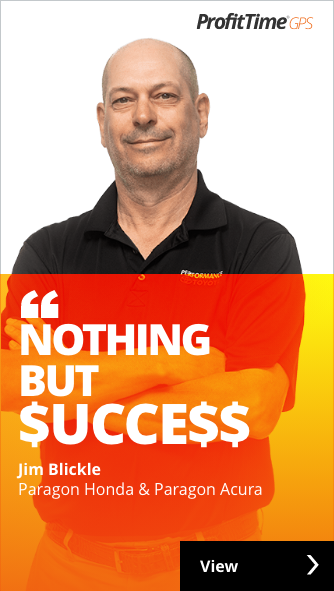4 Pointers To Achieve Your Used Vehicle Sales, Profitability Potential
I’ve been hearing from dealers concerned that they aren’t able to reach what they consider the full potential in their used vehicle departments.
 In many cases, these are dealers who seek to move the goal posts—they’ve consistently sold 50 or 60 used vehicle sales a month, but want to do more. They’re tired of seeing similarly sized competitors sell 100 or more used cars every month. They want a bigger slice of the market, but can’t seem to get there.
In many cases, these are dealers who seek to move the goal posts—they’ve consistently sold 50 or 60 used vehicle sales a month, but want to do more. They’re tired of seeing similarly sized competitors sell 100 or more used cars every month. They want a bigger slice of the market, but can’t seem to get there.
Likewise, the dealers want better grosses on the cars they sell, as well as the additional units they’d like their used vehicle departments to move across the curb.
In these conversations, I’ll typically congratulate these dealers. I think it’s good that their competitive spirit has moved them from contentment to concern and, in some cases, consternation about their used vehicle performance. Likewise, I applaud them on their sound retailing instincts—if used cars are selling in their markets, why not get in a bigger piece of the action?
I follow the accolades with a dose of cold, hard reality. The dealers’ current inability to improve sales volumes and profitability is their fault. In many cases, they haven’t reinvented their used vehicle processes and teams to play more aggressively, effectively and efficiently in today’s retail market to achieve the improved performance they seek.
I also share some good news. Despite their current difficulties, today’s dealers are blessed with a rationale used vehicle marketplace, thanks to the Internet and new technology. I see it time and again. Dealers who become disciplined, technology-enabled stewards and students of their local used vehicle markets gain an understanding of what it takes to move the needle and make more money.
The following are four best practices I offer dealers to help them pick up the pace of sales and profitability in their used vehicle operations:
1. Get the right cars. With the help of technology, today’s rationale market serves up retail indicators on every car. Dealers can instantly know whether any used vehicle is a retail winner, a dud or a so-so unit for their stores. The advent of Market Days Supply data and metrics means there’s no longer much mystery about a car’s potential. The challenge becomes how well a dealership’s used vehicle operation uses the data to maximize opportunities and mitigate risk.
2. Manage margins. I’ve come to like this updated version of an age-old used vehicle axiom: “You make your money when you buy a car and carefully manage its profit margin until the day it sells.” Today’s market data and tools help dealers know each used vehicle’s margin potential from the moment they acquire the car to the moment it sells. This information guides margin-astute decisions as they acquire, recondition, merchandise and price their used vehicles.
3. Price properly. In the not-so-distant past, most dealers followed a “set it and forget it” approach to pricing used vehicles. More and more, dealers recognize that if their used vehicles aren’t properly priced to fit their local market, the cars won’t attract customers. These dealers recognize that it makes little sense to serve up an irrationally priced vehicle in a rationale market. Similarly, a growing number of dealers understand that market volatility makes re-pricing used vehicles a near-daily requirement to ensure each vehicle’s correctly positioned in the market. These dealers will examine cars that aren’t getting the online attention they expect and check the pricing, merchandising and other factors to determine next steps that would attract more consumer attention to a car.
4. Minimize age. Dealers should strive to sell every retail used vehicle within 45 days. If a vehicle hasn’t sold in this timeframe, it should be viewed as a management failure and a learning opportunity. It’s difficult for some dealers to accept a loss at 45 days or beyond. However, “your first loss is your best loss,” to borrow a saying from my financial advisor. Aged cars simply don’t get better in today’s market. My recommendation: Take the loss, liberate the capital, reinvest it in another vehicle and learn from the mistake.
As I outline these best practices for dealers, many quickly recognize that the improved sales volumes and profitability they seek will require more attention, discipline and time than they’re accustomed to investing in their used vehicle operations.
But such is the nature of today’s used vehicle business; it’s more challenging now than it’s ever been.
If Thomas Edison were alive, I suspect he’d offer this to dealers who can’t seem to raise the bar in their used vehicle department performance: “Opportunity is missed by most people because it is dressed in overalls and looks like work.”
The post 4 Pointers To Achieve Your Used Vehicle Sales, Profitability Potential appeared first on Dale Pollak.

















